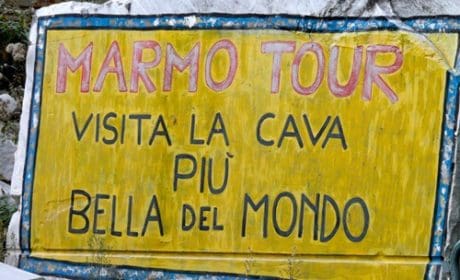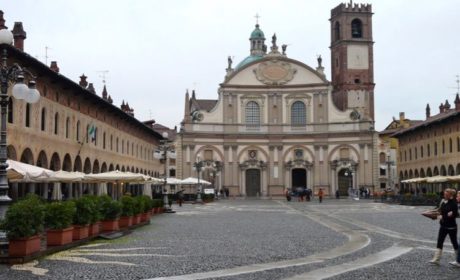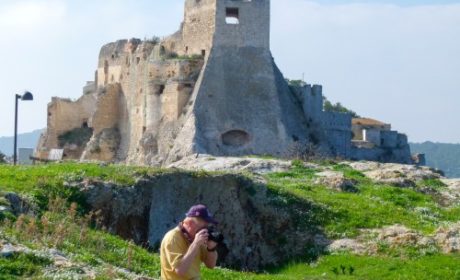As is obvious from our many trips to the country, our love of Italy is pretty much boundless. Fun road trips through the north and south of the country have proved that the country is full of fascinating sites at virtually every corner. Today’s guest contributor, Naomi Elster, is taking us on a history-filled tour of the top sights in Padua, one of the country’s lesser-known destinations.
Padua (Padova in Italian) has it all. Or at least, it had it all, until the city, like others in the Veneto region of Northern Italy, it was occupied by Venice in the early 1400s. In fact, the city is less than an hour Venice, and it’s easy and cheap to travel between the two cities by train, making Padua a good base for travellers who fancy a day trip to Venice, but don’t want to stay in this frequently overcrowded tourist hotspot.

However, Padua has more than enough magic to be a destination in its own right.
There are grand palaces, even grander cathedrals, scores of medieval piazzas, and possibly some of the world’s most impressive frescoes, reminding present visitors how powerful the city was in its 13th century golden age. Galileo lectured here, and the current generation of students at the university give the city a nice energy. The botanical garden has trees dating from 1585, and was a secret meeting place for resistance groups against fascist dictator Mussolini (who used this city as a parade ground).
Scrovegni Chapel

When the humid summer heat gets to be too much, it’s the perfect time to visit the world-famous Scrovegni Chapel, decorated with indescribably fine frescoes by Giotto, one of the artists to have kick-stared the Renaissance. The entire chapel, including all walls and the ceiling, feature Giotto’s spectacular work. The chapel is open to the public provided tickets are booked in advance (I was able to get a special evening ticket, romantically called “Giotto under the stars” by showing up on the day, this is possibly limited to the summer). Standard tickets are €13, with reduced rates from €6, and can be booked here.

The chapel was recently restored and the environment is in such a delicate state that visitors have to spend fifteen minutes in a temperature-controlled room before they enter the chapel, as too much humidity or heat from bodies that have been basking in the sun all day could damage the paintings. During the cooling-off period, guests can watch a very interesting documentary about the chapel and its history, but frankly, after a full day walking around in 34 degrees taking in all of Padua’s sights, simply being able to rest my legs in an air-conditioned room for a quarter of an hour was a treat in itself!

Padua is not a city that lacks beauty, charm or very much at all. However, the locals refer to it as the “City of three withouts” claiming its main attractions are more defined by what’s missing than by what’s there.
The Lawn without Grass

The Prato della Valle, known colloquially as the lawn without grass, is one of the biggest squares in Europe, and, as I stepped off the tram and crossed over to it, I couldn’t help feeling that it must also be one of the most magnificent, anywhere in the world. Despite the name, grass has successfully been cultivated in recent times.

The square is surrounded by a small canal, flanked on each bank by two spectacular rings of 18th century statues of notable scholars, including Antenor, who, according to Ancient Greek mythology, was an advisor to the Trojan royal family and founded Padova after that city welcomed in the wooden horse and was subsequently destroyed, several popes, an early clockmaker, and, of course, Galileo.
Looking for hotels in Padua? We can help!
Il Prato is a popular meeting place, and hosts live music and fireworks at certain times of the year, such as New Year’s Day. Markets and events can sometimes be found close by, such as an international food market just behind the square when I visited last July.
Had I not been fortunate enough to visit Prato della Valle with a local guide, I would have completely missed the grandeur of the neoclassical Basilica of Santa Giustina, just a stone’s throw away. This enormous cathedral, with several altars, an interestingly patterned marble floor and housing the earthly remains of one of the apostles (St Luke), is likely to be of interest to religious travellers, especially as it still has the feel of a place of worship rather than a tourist attraction about it. However, in a country so full of cathedrals as Italy, it is, unfortunately, never going to be the city’s main event – although it’s worth ducking in after a visit to Il Prato both for the art and architecture, and because, as my local friend described it, it’s “the best free air conditioning in the city.”
The Saint without a Name
Saint Anthony is the patron saint of lost things, so it’s perhaps fitting that here in Padova, where the one-time Portuguese priest was so popular that a basilica in his honour is speculated to have been started just a year after his death, he’s lost his name. The Basilica of Sant’ Antonio has an address at Piazzo del Santo – the Piazza of the Saint – and Sant’ Antonio himself is often simply referred to as Il Santo.
The Basilica usually holds the remains of its namesake, although they can occasionally be sent on tour – as the basilica’s (at the time of writing, slightly out of date) website proudly announces, “The precious relics of our Saint will be in Austin, Texas, in Bangladesh, and in India” between February and March 2017.
Pilgrims flock to the church to see the tomb of Saint Anthony, surrounded by intricate wooden carvings depicting scenes from his life, but nonbelievers can take in the sheer size of the basilica, the paintings, the ornate altars and the peaceful atmosphere. It’s free in and worth a visit, even if it’s not quite as awe-striking as other cathedrals in Italy, or as unique as Padua’s other main attractions.
Apparently, it’s the place to go if you’re single and want to pray for a match. Each to their own, but personally, for that, I’d rather go somewhere I can get a drink, such as the last of Padua’s main withouts.
The Cafe without Walls
Caffé Pedrocchi is an opulent antique café built in the 1800’s as a refuge for travellers and intellectuals. In Italian, the idiom “To you, my house has no door” is used to tell a friend they are always welcome. It was founded in 1772 by Francesco Pedrocchi; his son subsequently bought several neighboring buildings and had them joined to the cafe, resulting in a coffee shop that was both unusually large and architecturally eclectic. When Pedrocchi junior passed the premises on to his own son, he did so on condition that the premises was to remain a cafe, which it has, to this day.

Inside the cafe, I felt like a queen, but in one way, the ornate interior décor may work against Caffé Pedrocchi. I hesitated at the door before going in, wondering if my clothes were too casual, and suspecting that the menu would totally blow my travel budget – if the budget would even stretch that far.
However, the atmosphere and fellow customers inside the café were laid back and relaxed, and despite the lavish decoration, you’ll pay no more for a coffee, or a drink and snack, or a full meal here than you will elsewhere in Padua. The signature drink is a unique, mint-flavoured coffee, brewed according to a secret recipe and sharing its name with the coffee house.
A Cautionary Note
I stayed just beyond the train station, which is not recommended. Once you leave the centre of the city, the streets are not easy to navigate, and, like all major cities, Padua has its problems. My accommodation was on a safe street; the streets I had to pass to get from there to the centre were anything but. I strongly encourage everyone to visit this magnificent city, but be particularly careful when choosing your accommodation, and if you stay anywhere near the train station, take taxis between your accommodation and the centre, especially at night (approximately €10).
Padua looks like a great place to visit, doesn’t it? What’s your favorite Italian adventure? Come join the conversation at the My Itchy Travel Feet page on Facebook. Or send us an email with your thoughts.



